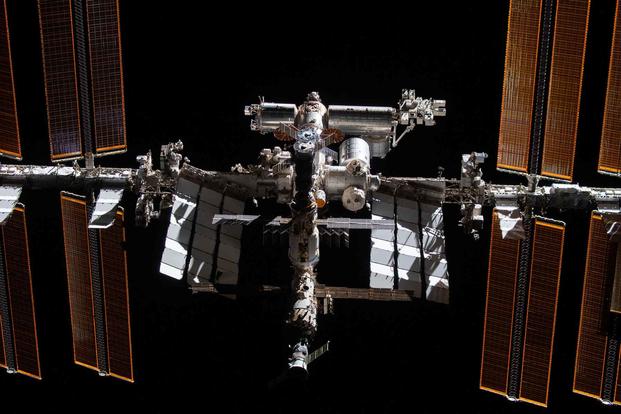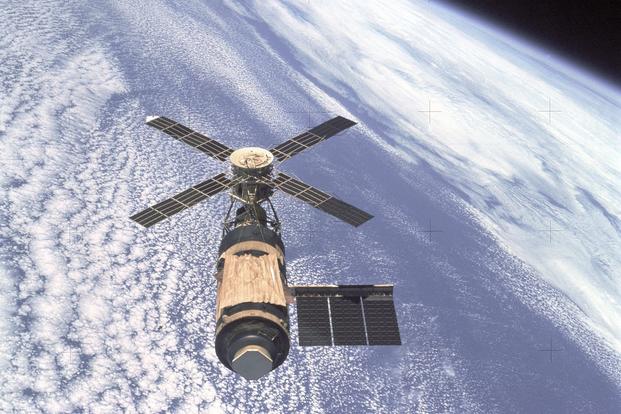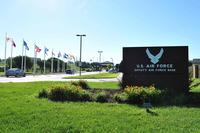What happens when a space station falls out of the sky? The world got a preview back in 1979 with the end of Skylab, the United States' first space station.
NASA had placed Skylab into Earth orbit six years earlier in 1973. Its crews had come and gone by 1974, and a plan to control the deorbiting process by attaching a separate vehicle to it -- much like the plan currently being considered for the International Space Station -- had fizzled.
While shut down for a four-year nap, Skylab's orbit had decayed, and a surprisingly active solar cycle in 1977 had warmed up Earth's atmosphere, expanding it and rendering it denser than expected. As a result, Skylab lost so much altitude that the proposed solution, which involved a flight of a yet-to-fly space shuttle, couldn't happen in time. As a result, NASA simply adapted the best it could as Skylab fell back to Earth -- with spectacular results.
Today, as the U.S. and its ISS partners work through another possible down-to-the-wire, space station deorbiting scenario -- of a significantly more preponderous flying lab -- a top takeaway from Skylab still applies.
"You're only as good as your worst assumption," said Dave Huntsman, a recent NASA retiree who was one of Skylab's flight controllers during its final years, in an interview with Military.com.
'The World Had Its Eyes on Us'
Unlike the ISS, Skylab belonged to the U.S. alone. U.S. military astronauts commanded all three of Skylab's crewed missions that took place in 1973 and 1974 and accounted for seven of its nine crew members.The Apollo 12 commander who'd walked on the moon, test pilot and Navy Capt. Charles "Pete" Conrad Jr., commanded Skylab's first three-member crew of all U.S. naval officers in 1973.
The three missions accomplished about 2,000 hours of experiments and logged images of Earth and the sun, and each group of astronauts spent longer onboard than the last, culminating in the world record, at the time, for the longest-duration human spaceflight at 84 days.

Then Skylab orbited, inert, from February 1974 until March 1978, when NASA flight controllers began the process of waking it back up and reestablishing control, and analysts set about the task of constantly estimating when, then where, it might fall back to Earth in a thousands-of-miles-long trail of scorched debris.
They had few options.
"For the last two years, everything was broken," Huntsman recalled. "We practically had to throw out the manuals."
NASA personnel still had enough control, however, to change Skylab's attitude, or orientation, into a handful of configurations. A plan emerged to command Skylab to reorient into different attitudes as its orbit decayed, with the object of eventually getting it into a situation conducive to a safe reentry -- one that avoided populated areas. The final attitude in the scheme, a tumble, would cede all control NASA had to affect the orientation.
A NASA technical memorandum published in 1980, the year after Skylab's reentry, rehashes all the predictions, and adjustments to the predictions, of Skylab's orbital decay, starting in the space station's design phase to narrow down the likely time and place of its impact -- until the last day, July 11, 1979, when the plan changed.
"The world had its eyes on us in 1979," said Huntsman -- not unhappily -- with "insults being hurled" in the international press over "not knowing where it was going to fall."
As real-time data from the actual descent became available, the plan to place Skylab into its tumble at 75 nautical miles in altitude, or 455,708 feet, started to look problematic as NASA's analysts realized the timing could result in debris scattering across North America, with "a relatively large population area" given "a high probability of being impacted by Skylab debris," according to the report. Reconstructing the reentry with all real data after the fact showed that this had, in fact, been a "significant probability."
Skylab's orientation "flat-on to the wind" created a lot of drag, so it "was coming down quickly, with the impact site in southeastern Canada," Huntsman recalled.
Skylab's Last Day
On that July day, NASA played its last card.
To reduce drag and hopefully send Skylab sailing past the East Coast, the decision came down to command the tumble sooner, at 81 nautical miles, with the intent of crashing the debris into the Indian Ocean, "with a slight probability of an Australian impact," according to the report. If Skylab did hit Australia, the "overshoot" would present "very little risk to the population."
"We all agreed, 'Yeah, it'll never reach that far,'" Huntsman said.
Even with Skylab's relatively compact size -- 82 feet long without the Apollo transport modules attached, compared to the sprawling International Space Station's 356-foot length -- "very small deviations in the observed data" still moved the projected impact point "by a large amount," the report explains.
A 5% difference in solar activity, for example, could amount to a three- to five-minute difference in the time of impact. If the altitude estimate was off by 2 nautical miles, that could make up to a 10-minute difference, as could a 1% variation in aerodynamics or the altitude of the breakup. Just one or a combination of wrong assumptions could land the debris somewhere unplanned.
Related: 'I.S.S.' Imagines if War Came to the Space Station. Here's What Could Actually Go Wrong
With the tumble command sent and Skylab presumably tumbling, the flight controllers settled in to wait. Estimates assumed that Skylab's solar arrays would have broken off by the time it got within range of a tracking station on Ascension Island in the South Atlantic.
Then they got a surprise.
"The screens lit up like a Christmas tree," Huntsman said, with Skylab communicating to Ascension Island "more and better data ... than we'd seen for the past year. The coverage was magnificent."
They realized they were "seeing Skylab as it was burning, but it was still transmitting." They were "watching the disintegration in real time." Then it passed over the southern horizon from Ascension Island, "and that was it" for communications.
Skylab ultimately did overshoot its target, and it rained down debris over remote parts of Australia. It had disintegrated later -- at a lower altitude -- than predicted. But having moved "the actual impact point by approximately half a revolution" around the Earth, according to NASA's estimates, and representing "minimum risk to earth's population," the agency deemed the deorbiting a success.
The Next Chapter
Skylab's mission analysts documented all their deorbiting estimates in order to inform future missions, a future coming to pass only now, almost 45 years later. Their current-day counterparts will consider some of the same factors -- solar activity, for example, though with better surveillance of space weather and several more decades of data to refine the predictions.
But in other ways, NASA and its ISS partners may have more cut out for them as they sort out what they'll do at the end, currently expected around the end of this decade, not to mention in an emergency in which it might fall back to Earth sooner.

For one thing, the ISS is so much bigger and more complex than Skylab, comprised of a long series of interconnected modules with docks for visiting spacecraft and solar panels arrayed like wings, compared to Skylab's single modest habitation module, relatively limited space for experimentation and less extensive arrays.
For another thing, NASA owned Skylab outright and could command it from the ground. However, in the case of the ISS, Russia owns the segments that actually steer the space station, including "all of the propulsion ... for station [altitude] reboost, attitude control, debris avoidance maneuvers and eventual de-orbit operations," according to NASA.
A NASA spokesperson did not address Military.com's question about whether, in the event of an emergency in which the astronauts have to evacuate, the ISS could be controlled remotely from the ground like Skylab, even with Russian participation.
Perhaps significantly, both old and new ideas for deorbiting the ISS -- a now-discarded plan to control it with three of Russia's autonomous Progress cargo capsules, and a new one to acquire a U.S.-built vehicle for the purpose -- might solve the problem of a lack of remote control. Those vehicles could be controlled from the ground.
Even while Progress was the plan, the last crewed mission would have lasted right down to an altitude described in a NASA report as "ISS point of no return," after which it would rapidly descend.
Once the space station reaches the atmosphere, engineers expect solar arrays and radiators to break off first, followed by the pressurized modules where astronauts reside and experiments take place, "and finally individual module fragmentation and loss of structural integrity of the truss," or structural backbone, according to NASA. Much hardware, the agency says, will melt or vaporize, "whereas some denser or heat-resistant components like truss sections will survive re-entry."
Huntsman speculated that in Skylab's case, however, it might not have broken up in the predicted sequence -- maybe some part better withstood the effects of reentry than its designers had expected, for example, with each deviation from the estimate setting off a chain reaction.
Despite all the estimates and revisions, with Skylab's mission analysis team continuously adjusting and improving their data sets, one set of assumptions had thrown things off:
"It held together longer than anyone imagined," Huntsman said.
Want to Learn More About Military Life?
Whether you're thinking of joining the military, looking for post-military careers or keeping up with military life and benefits, Military.com has you covered. Subscribe to Military.com to have military news, updates and resources delivered directly to your inbox.














